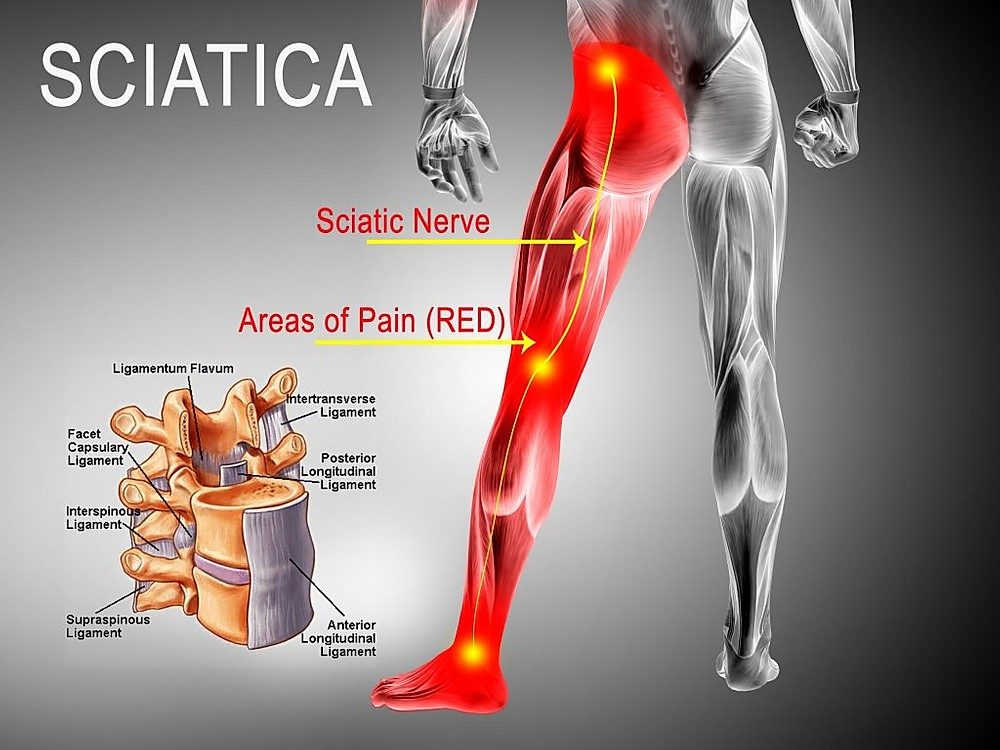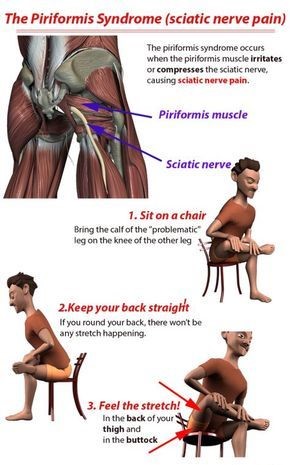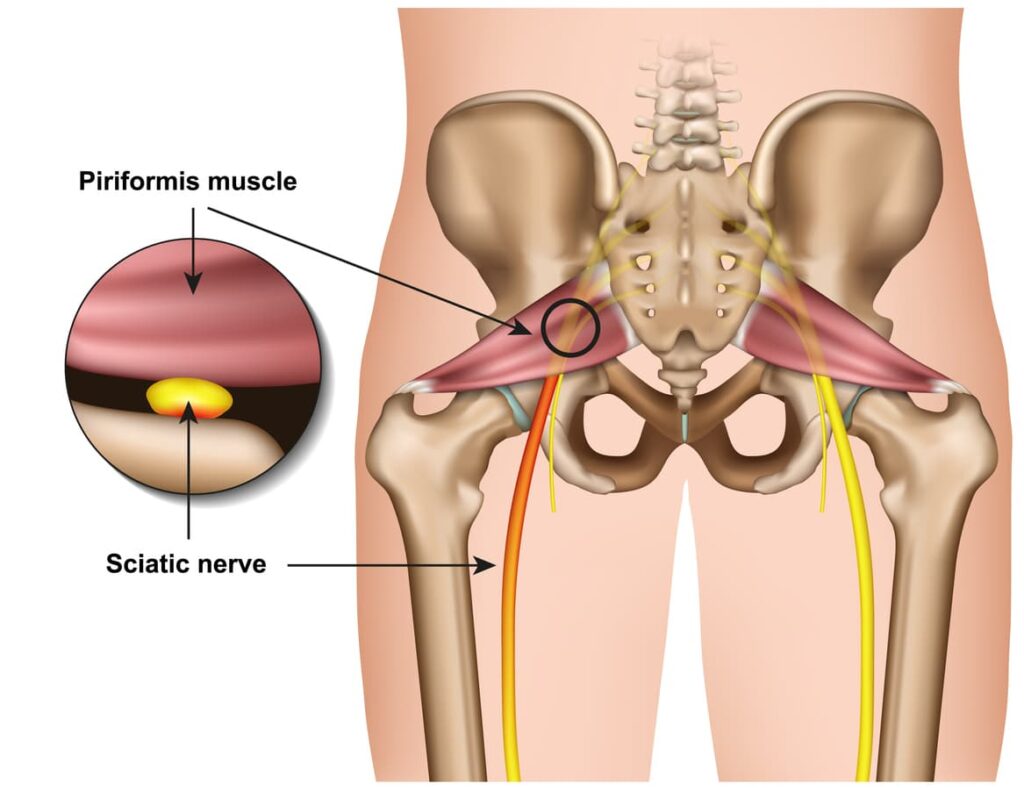The above two mentioned terms are not so rare in todays life as the Sedentary lifestyle contributes its best to these terms.But now the question arises what are these and how are they different from each other.Sciatica or Sciatica neuritis is a condition in which the pain radiates in the distribution of sciatic nerve that is running from the back to the one or both legs .Sciatica is commonly caused due to herniated disc putting presssure over the nerve and other causes are bone spur or spinal stenosis compressing the sciatic nerve .The pain radiates from lower back to buttocks and down the legs affecting the posterio lateral part of leg. It causes pain,burning sesation ,tingling sesation and numbness along the leg and foot.

Now the Piriformis Syndrome , The Piriformis Syndrome is a disorder in which the tight piriformis muscle affects or eventually putting compression over sciatic nerve causing pain and tingling senstaion over the lower back ,buttocks and down the leg . Piriformis is a muscle located deeply in buttocks behind the gluteus maximus and its action is rotation of femur during the hip extension and abduction of femur during hip flexion.However it shows similar symptoms to sciatica but the reason and root cause are different.The exact cause is unknown for the tightness of Piriformis muscle.
Muscle spasm in the piriformis can be due to irritation in nearby structures such as sacroilliac joint,tightness and swelling in response to injury or spasm.Any of these can lead to pirifomis muscle affecting the sciatic nerve as the nerve runs beneath or through the piriformis muscle. Your doctor would perform some physical tests for differentiating sciatica and Piriformis Syndrome.
Self Examition



Risk factors
- risk factors for sciatica and piriformis syndrome are
- Age – Age related changes such disc herniation and bone spur, Sacroilliac joint dysfunction contributes to these problems.
- Obesity – Increased wieght over spine due to over weight can contribute to sciatica .
- Occupation – occupation involving heavy weight lifting and twisting and turning of back such as in drivers and porters are high at risk for sciatica . Long sitting jobs such as doctors ,people working at IT sectors or people having sedentary lifestyle are more likely to develope sciatica and piriformis syndrome.
- Diabetes – Diabetic people are high at risk due to blood sugar level increasing the risk for nerve damage.
complications
- people with mild symtoms are recovered fully in few weeks however sciatica may lead to nerve damage and other complication affecting the lower extremities.
- Piriformis syndrome is treated and fully recovered in 2-3 weeks but there are few situation in which you need to seek your Doctor’s help such as –
- loss of sesnsation in lower legs or even weakness in affected legs .
- loss of bowel and bladder control.
Prevention
- Exercise daily- work on your core muscles and abdomen muscles as well , keep your back strong . Ask your Doctor to recommend exercises and get help from physiotherapist.
- keep your posture correct – keeping your posture correct while sitting for long hours for work or even while walking and doing exercises , prefer chair with good height and cushion with proper desk height and arm rest. Try to maintain the normal curve of your spine while keeping a roll of towel at your back while working.
- Use good body mechanics – If your job requires heavy lifting then try to work through your back instead of flexing and bending your back try to sit and then lift while maintaining the back straight and even if your work requires long standing position so try to rest one foot over a box or small tools regularly. Instead of using distal joints while working try to use proximal joints to work or bend as this puts less compression and load over your spine.
- self stretching – try to take break between your long sitting and long standing hours and stretch the legs and back as well.
For consultation visit https://doctor4care.com/ and book your appointment.


